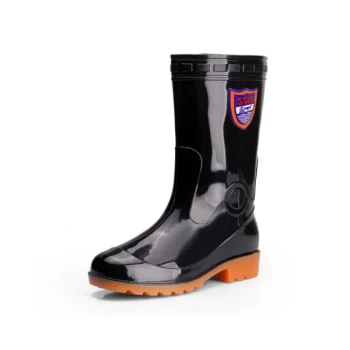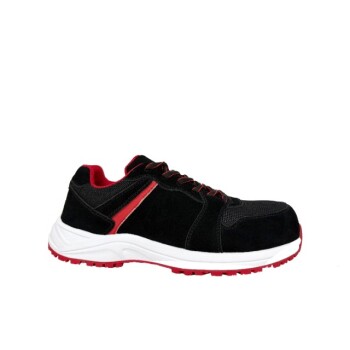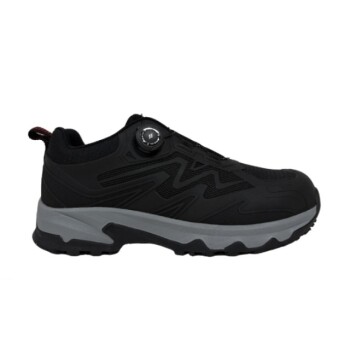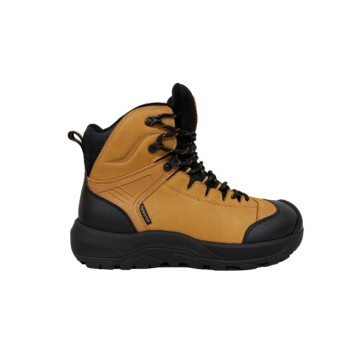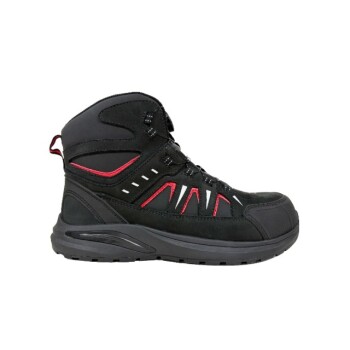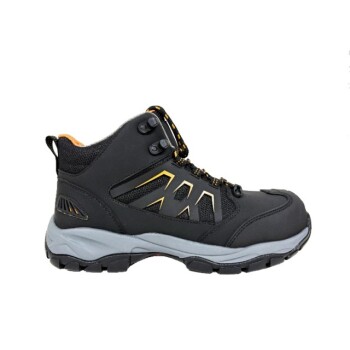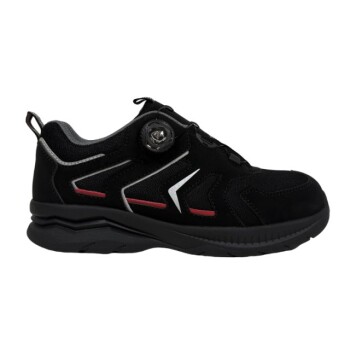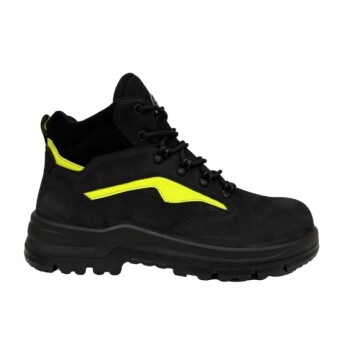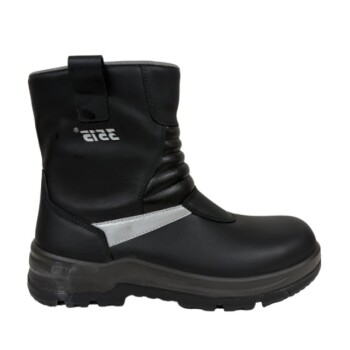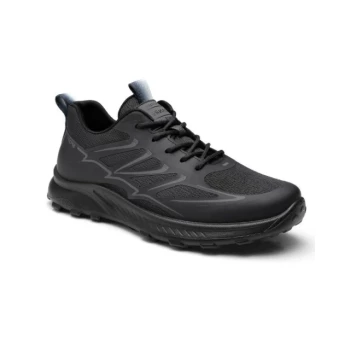The four key factors for selecting the right hiking footwear are your personal foot health, the terrain you will be hiking, the weight of the pack you will carry, and the expected weather conditions. By systematically evaluating these four elements, you can determine the precise level of support, protection, and durability you require.
The "best" hiking footwear does not exist. The right choice is a calculated decision based on a clear understanding of your specific needs, the environment you'll be in, and the non-negotiable importance of a perfect fit.
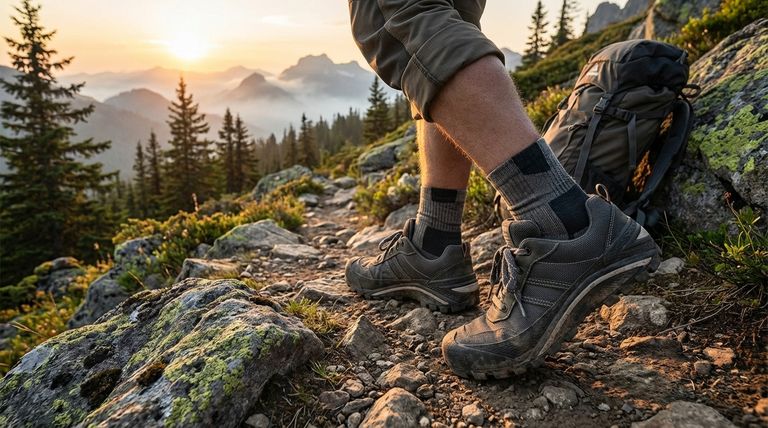
The Four Core Factors: A Strategic Assessment
Choosing footwear is the most critical gear decision you will make. It directly impacts your comfort, safety, and endurance. A strategic assessment begins with four key variables.
Factor 1: Your Personal Foot Health
Start with an honest review of your feet. If you have a history of rolled ankles, plantar fasciitis, or other injuries, prioritize footwear with enhanced stability and support.
This may mean choosing a stiffer, more structured boot over a flexible shoe, even for less demanding trails.
Factor 2: The Demands of the Terrain
The ground beneath your feet dictates the necessary level of protection. Smooth, well-maintained trails may only require lightweight trail runners.
However, rocky, uneven, or off-trail routes demand robust footwear with significant ankle support and underfoot protection to prevent twists and stone bruises.
Factor 3: The Weight on Your Back
The total weight you carry—your body weight plus your pack weight—is a critical factor. A heavy pack alters your center of gravity and places immense stress on your feet and joints.
To counteract this, you need a more supportive shoe or boot with a stiffer sole and midsole. This structure provides the stability required to manage a heavy load safely over long distances.
Factor 4: The Prevailing Weather
Consider the climate of your hiking destination. For wet, muddy, or snowy conditions, waterproof footwear is essential to keep your feet dry and prevent blisters.
For hot and dry climates, highly breathable, non-waterproof footwear is often a better choice, as it allows sweat to escape, keeping your feet cooler and drier from the inside.
The Non-Negotiable: Achieving the Perfect Fit
Even the most technologically advanced footwear will fail if it doesn't fit correctly. An improper fit is the primary cause of blisters, hot spots, and general misery on the trail.
The Golden Rules of Trying On
Always try on footwear in the afternoon or evening, as your feet naturally swell throughout the day. Wear the exact socks you plan to hike in to get an accurate feel.
You should have a snug fit around your heel and midfoot, with no lifting or slipping. Crucially, ensure there is a thumb's width of space between your longest toe and the end of the shoe to prevent toe-bang on descents.
The Critical Role of Socks
Never use cotton socks for hiking. Cotton absorbs moisture and holds it against your skin, which is the leading cause of blisters.
Always opt for moisture-wicking socks made from wool or synthetic materials. They pull sweat away from your skin, keeping your feet drier and more comfortable.
Breaking In Your Investment
While many modern synthetic shoes require little to no break-in time, traditional leather boots do. Always wear new footwear around the house and on short walks before committing to a long hike.
This process allows the material to conform to your foot's shape and helps you identify potential hot spots before they become a problem on the trail.
Understanding the Trade-offs
Every footwear choice involves a balance of competing characteristics. Understanding these compromises is key to making an informed decision.
Support vs. Weight: The Energy Equation
Heavier, more supportive boots offer maximum protection and stability, which is vital for rough terrain and heavy packs. However, every ounce on your feet requires significantly more energy to lift over thousands of steps.
Lighter trail runners conserve energy and feel more agile, but they sacrifice the ankle support and underfoot protection of a traditional boot.
Waterproofing vs. Breathability: The Climate Dilemma
Waterproof membranes (like Gore-Tex) are excellent at keeping external water out. However, they inherently reduce breathability, which can trap sweat and lead to damp feet in hot weather.
In arid conditions, a non-waterproof but highly breathable shoe will often keep your feet drier and more comfortable than a waterproof one.
Making the Right Choice for Your Goal
Ultimately, your footwear must align with your specific hiking objectives. Use these guidelines to narrow down your selection.
- If your primary focus is day hiking on well-maintained trails: Lightweight hiking shoes or trail runners provide sufficient comfort and performance.
- If your primary focus is multi-day backpacking with a heavy pack: Sturdy, over-the-ankle hiking boots are essential for providing the necessary support and durability.
- If your primary focus is fast-and-light hiking or trail running: Lightweight, flexible trail runners are the optimal choice for agility and speed.
- If your primary focus is hiking in wet, unpredictable conditions: Footwear with a reliable waterproof membrane is a non-negotiable requirement.
The right footwear is the piece of equipment that allows you to forget about your feet and focus on the experience.
Summary Table:
| Factor | Key Consideration | Footwear Impact |
|---|---|---|
| Foot Health | History of ankle rolls or plantar fasciitis | Prioritize stability and structured support |
| Terrain | Rocky/uneven vs. smooth/well-maintained trails | Determines need for ankle support and underfoot protection |
| Pack Weight | Heavy load alters center of gravity | Requires stiffer soles and midsoles for stability |
| Weather | Wet/muddy vs. hot/dry conditions | Choose between waterproofing and maximum breathability |
Ready to Equip Your Customers with Superior Hiking Footwear?
As a large-scale manufacturer, 3515 produces a comprehensive range of durable and high-performance footwear for distributors, brand owners, and bulk clients. Our production capabilities encompass all types of hiking shoes and boots, designed to meet the specific demands of any trail and climate.
Partner with us to offer your customers:
- Optimal Fit & Comfort: Precision engineering for superior support and blister prevention.
- Durability for Demanding Use: Built to withstand heavy packs and rough terrain.
- Versatility for All Conditions: From waterproof boots to breathable trail runners.
Contact 3515 today to discuss your manufacturing needs and elevate your product line with reliable, high-quality hiking footwear.
Visual Guide

Related Products
- Durable Rubber Sole Outdoor Shoes Wholesale & Custom Manufacturing
- Durable Waterproof Rain Boots | Custom Manufacturer for Wholesale & Brands
- Safety Footwear Wholesale Manufacturer for Custom OEM/ODM Production
- Premium Suede Sport Safety Shoes for Wholesale & Bulk Orders
- Advanced KPU Athletic Safety Shoe with Steel Toe Cap Anti-Slip Rotary Lacing System
People Also Ask
- What technical requirements are essential for outsoles in pivoting sports? Boost Grip and Lateral Stability
- Why are vulcanized soles popular in urban fashion? Discover the Legacy of Authentic Street Style
- What are the disadvantages of vulcanized soles? Lack of Support & Durability Explained
- Why are rubber-soled shoes considered multi-weather footwear? Unlock All-Season Traction & Protection
- What were traditional shoe soles made from before rubber? The History of Leather Soles

